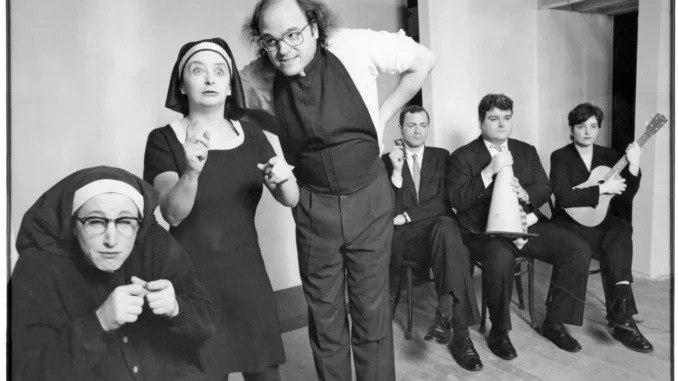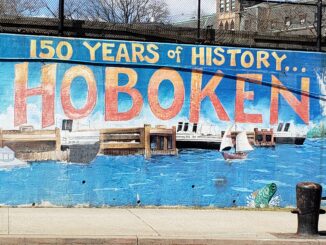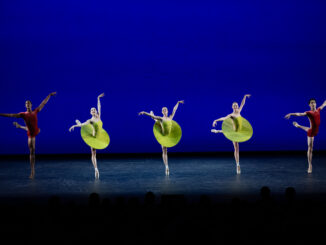
This article is re-posted with the generous permission of SCOTT SILBERSTEIN
Editor’s Note: Second City wrapped me, my family and friends in its magic.
Why the magic of The Second City had always defied the screen—and how one documentary broke the rules, honored the process, and preserved something electric.
Whether you’ve heard of it or not, you know about Chicago’s famed comedy theater The Second City. Whether you know it or not, some of your favorite actors, comedians, writers, directors, composers, and producers got their start—or their big break—on its stages. I could rattle off the biggest of those names—Tina Fey, Stephen Colbert, Bill Murray, John Belushi, etc.—but you’ll have more fun falling down the rabbit hole of their alumni page. It’s a treasure trove of American comedy.
Photo credit: The Second City
But for all the inventive, edgy, and flat-out brilliant comedy that had taken place there, when we started archiving Second City shows in the mid-90’s, its energy rarely translated well to the screen.
Why did that matter so much to us? It wasn’t just because Second City is one of the most influential comedy institutions in the world, having launched the careers of era-defining artists. It was that its creative engine, its process, and its magic had remained largely invisible to the broader public.
To us, this was a missed opportunity not just for audiences, but for our cultural record. When the way The Second City’s work evolves is hidden, it risks being seen as just a feeder system for stardom, instead of what it really is: a crucible of ideas, risk-taking, and social commentary. That misperception dulls its impact.
And for every lucky person who gets to see a Second City show live, there are thousands who can’t. If a screen version fails to capture what makes the work matter, then the work stays niche, when in truth, it’s one of our most accessible, democratic, and potentially transformative art forms.
So what makes presenting the essence of improvisation so hard?
Live and in person, the work feels conjured out of thin air, even when it’s not. That’s because Second City shows are devised through improvisation, and so its shows carry that well-earned and well-deserved illusion.
That’s both its magic and its problem. Unless you know for a fact that something is happening as you’re watching it—a Super Bowl, for example—screens can make even the most electric performances feel muted or distanced (a daunting challenge HMS recognizes and gleefully takes on every time we do a live performance special).
Improvisation has a particular flavor of electricity that’s unlike anything else I’ve seen on stage. It’s challenging enough to bring theater, dance, music, and even sports to screens successfully. But improvisation—the essence of Second City’s magic, which relies on the reality (or belief) that something’s actually happening in the moment—can feel especially flat on camera.
There’s an added irony, which is that the better improvising goes, the harder it is to convince even the live audience it was made up on the spot, let alone those watching on screens.
HBO, A&E, and others made noble attempts at bringing The Second City to TV, but their star-studded shows, which leaned heavily on guest appearances by famous Second City alumni who’d already made it big, had a built-in safety to them that belied the “anything could happen” vibe of the live show and took away the feeling of immediacy and discovery.
In the right room, though, with the right people—both on stage and in the audience—it’s a different ballgame. You surrender to the moment. The future doesn’t matter, and, Second City’s storied history notwithstanding, neither does the past. No one laughs at a Second City show circa 2025 just because Chris Farley performed there thirty years ago. The laughs are earned every night… or they’re not.
Being present is something I’ve always struggled with. The shows at Second City helped me grasp the importance of staying in the moment. The more I saw, the better I got at it. And so The Second City quickly became one of my favorite places in the world.
You can imagine, then, how I elated I was when, in early 1995, HMS got the call to serve as Second City’s temporary archivists.
Photo credit: The Second City
This was meant to be a stopgap gig—a year or two bridge between the era of single-camera archival tapings and the launch of Second City’s in-house video team—but it turned into an eight-year stint, during which we witnessed Second City entering a new golden age, following the creation of a tradition-defying, cobweb-shaking, trend-setting show called Piñata Full of Bees, which dispensed with decades of Second City traditions, by incorporating some of the long-form improv ideas and edgier concepts being developed at Second City-influenced theaters like i/o and The Annoyance.
Citizen Gates, the first mainstage show HMS shot, was terrific. Original cast member Jon Glaser had left during rehearsal, succeeded by an upstart talent from the touring company named Tina Fey. Her arrival marked the first time there had been gender equity on the Second City mainstage, a landmark moment that would be mirrored some years later when she became Saturday Night Live’s first female head writer. Directed by Annoyance co-founder Mick Napier, Gates followed Piñata’s edgy staccato exhilarations with a giddy, legato joy. And its cast—Tina Fey, Rachel Dratch, Scott Adsit, Kevin Dorff, Jenna Jolovitz, and Scott Allman—delivered some of the smartest, best-acted, most fully embodied improv I’d ever seen.
Something extra special was happening on that stage, and it made us think that this deserved more from us than simple archiving.
Photo Credit: Jennifer Girard
Fearing that half of this extraordinary cast would be on Saturday Night Live by the fall, I pitched to Second City’s producer Kelly Leonard a concept that would let us start shooting immediately. The idea was to follow Citizen Gates performances night after night so we could track its two improvised sections, exploring improv in a way live audiences could never experience.
In true “Yes And” fashion, Kelly responded that almost the entire cast was returning for the next show (the one exception being Scott Allman, who would be succeeded by the brilliant Jim Zulevic). Director Mick Napier was coming back, too. And they were starting rehearsals in a couple of months. Why not expand on the idea I’d pitched, and follow the making of a Second City mainstage revue from the first day of rehearsal through opening night?
Kelly and I pitched the idea to Mick, who gave it about three seconds of consideration before agreeing. Then it was time to pitch the cast, who said yes, their only stipulation being that they have no editorial input. (In case you’re wondering, no, it doesn’t get better than that.)
We’d done something like this before, most recently with the Steppenwolf reunion shoots that made up the bulk of 25 Years on the Edge. But we hadn’t tackled anything on this scale.
Photo Credit: HMS Media
Both the rehearsals and the documentary shoot began in October of 1996. Our camera team’s approach mirrored the cast’s: stay present. Listen. Watch. Respond. Don’t chase moments—just follow and honor them.
The next five months were a crash course in advanced improvisation and fly-on-the-wall documentary making. By mirroring the generous, supportive, and nurturing work Mick and the cast were doing, we were, in effect, improvising a documentary about improvising, catching, as playwright and Something Wonderful Right Away author Jeffrey Sweet would later write, “a hell of a lot of lightning in a bottle.”
Photo Credit: HMS Media
The show Mick and Company created, Paradigm Lost, is still considered one of Second City’s finest moments. And our documentary, Second To None—especially the expanded anniversary edition—remains a work of which we’re especially proud, because we found a way to bring Second City’s essence to the masses by creating something not about comedy’s past but instead its immediate, electric present. And about a theater that, for all the legends it had birthed, was still more about making discoveries and showcasing new voices than it was resting on its laurels.
Second to None didn’t just document performance. It captured the act of making. One minute an idea hadn’t yet been birthed, and the next, there it was, caught on camera. We reveled in giving viewers access to the ways great comedy gets built and demystifying a process that’s usually hidden. This is something that matters deeply not only for artists, but also for audiences and anyone who thinks improvisation is just an anarchic exercise in winging it.
Second To None also offers a rare, unfiltered view of iconic artists before they became household names. That’s gold, not because it makes the doc a star-spotter’s dream, but because it shows audiences what greatness looks like in development, not just in retrospect. It reminds us that greatness is all around us, and the tools to live great lives lie within us.
Like Paradigm Lost, Second To None got great reviews, but my favorite comment came not from the press but from Keegan-Michael Key (who debuted on Second City’s ETC stage shortly after the PBS premiere). Keegan told me, “When people ask me how Second City works, I tell them to watch Second to None.”
Photo Credit: HMS Media
Here’s something else about this project—it reminded us how gloriously broad “arts and culture” can be. Comedy is culture. Satire is critique with a sense of humor. Improvisation is a way of life. Showcasing the work on SNL or Comedy Central is one thing; digging deep into the hows and whys of the way it works is another, and requires the kind of approach not likely taken at commercial networks. We’d seen the shows they made. They were fun. And often very funny. I’m glad they were made.
But they didn’t move or excite us. We wanted to make a Second City show that did. You can’t play it safe or settle for funny. You have to take a chance and dig deeper, and there was only one place we felt we could do that.
That place was public television, where I first saw Monty Python and Ernie Kovacs at the same time I was discovering Steve Martin and Nichols & May records. While I watched M*A*S*H every Saturday night, PBS was the place that gave us the two-hour “Making of M*A*S*H, so I could see how the comedy was created and the ensemble interacted. And it was where, around the time we started Second To None, I could see the American Masters doc Take Two, about the legendary pairing of Mike Nichols & Elaine May, whose comedy records I regularly pilfered from my dad’s collection and who got their start in Second City’s embryonic stage.
Public television was what made Second To None conceivable in the first place. Commercial networks wanted the stars, and I get why, but PBS wanted what we were doing. They said yes not to product, but to process, possibility, and people you hadn’t heard of—yet.
More than 25 years later, people still talk about Second to None. Some remember it as the first time they saw Tina Fey. Some say it led them to Chicago, to comedy, to careers. Others remember it as the spark that led to an improv class—and from there, to better careers on stage or better lives at work and at home.
That’s public media at its best, and that’s why we do what we do. Stay present. Say “Yes And.” And operate as if the person in front of us—and the moment we’re in— could change everything.
Photo Credit: Jennifer Girard
Second To None is available for purchase here.
Photos are provided by SCOTT SILBERSTEIN











Be the first to comment